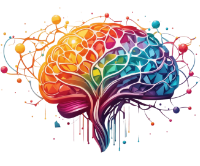“`html
Summary: Generative AI is transforming how people learn languages, but does it truly work as a long-term tool for practical communication? I put ChatGPT’s Advanced Voice Mode to the test for a month before a trip to Japan, using it as a language tutor and travel assistant. While the experience had its ups and downs, it revealed important lessons about AI’s role in language learning and travel preparation.
Testing AI for Language Learning
ChatGPT’s Advanced Voice Mode is one of the latest AI-driven tools aiming to assist in communication, education, and real-time interactions. Naturally, it made sense to see whether it could function as an on-the-go language tutor and travel companion. As someone with no formal knowledge of Japanese—except for hearing phrases in anime—I wanted to find out if a month of practice with ChatGPT could help me navigate Tokyo with some basic conversational skills.
Would ChatGPT be able to teach me enough to get by in Japan? Could AI-driven voice interactions improve comprehension, pronunciation, and confidence in daily situations? Those were the questions I set out to answer.
Starting From Zero
From the beginning, I treated ChatGPT as an over-the-phone tutor. Our sessions typically lasted about 30 minutes per day, with a focus on useful travel phrases. I practiced greetings, ordering food, and making small talk in simulated scenarios. Some interactions were straightforward while others exposed glaring limitations in AI-based language tutoring.
The first two weeks felt frustrating. Despite repeatedly practicing common greetings and travel phrases, little seemed to stick. I worried that this experiment wouldn’t amount to much. But then, around the third week, I started to notice progress. Phrases became more familiar, anxiety about getting things wrong faded, and I felt less intimidated by the thought of speaking Japanese in real-life situations.
Strengths and Weaknesses of AI Tutoring
ChatGPT has no specialized framework for language acquisition, and its generalized nature means that learning with it requires some patience. However, once it became clear that I was traveling to Japan and needed speaking practice, it adjusted fairly well. It even remembered which phrases I struggled with most and brought them up again for additional practice.
Still, the experience wasn’t seamless. The most irritating part of training with AI was ChatGPT’s tendency to over-police conversations. It would frequently generate warning messages regarding “guidelines” for voice interactions—often triggered when I simply asked it to repeat phrases multiple times. These interruptions broke the flow of conversation and made learning slightly more tedious than it needed to be.
AI Lacks the Toughness of a Human Instructor
One of the more amusing aspects of learning with ChatGPT was its personality. By default, Advanced Voice Mode is overly encouraging—to a fault. No matter how badly I butchered Japanese pronunciation, the AI would congratulate me on a “fantastic job.” Encouragement is helpful, but empty praise isn’t. When I specifically asked for detailed feedback on my pronunciation, ChatGPT adapted and became more critical, though it still wasn’t as demanding as a human tutor would be.
Using AI in Real Travel Situations
The real test came when I landed in Tokyo. Could ChatGPT help me in real-world contexts? Sort of. It was useful in one particular way: preparing me right before key interactions. Before ordering food or asking for directions, I would discreetly check a phrase with ChatGPT to ensure I had it right.
However, in busy areas like restaurants and train stations, using Advanced Voice Mode for live translations was often impractical. AI tools like these function best when there’s time for back-and-forth conversation. In crowded environments where a quick response is needed, it was simply more efficient to rely on asynchronous translations rather than trying to engage in real-time dialogue with the AI.
Did ChatGPT Make Me Fluent? Of Course Not.
After practicing for a month, was I able to speak Japanese fluently? No, not even close. However, I could remember several greetings and useful travel phrases well enough to interact with locals in simple situations. That alone helped reduce the stress of being in an unfamiliar city and made the travel experience feel more immersive.
AI voice tools like ChatGPT will continue to improve in language learning, but they still can’t replace the depth of human instruction. A human tutor brings more than just vocabulary and pronunciation advice—they introduce emotional cues, contextual understanding, and cultural nuance that AI struggles to deliver.
For now, generative AI can be a helpful practice tool, but relying on it exclusively risks flattening language learning into a series of robotic translations rather than real human communication.
#AIinLanguageLearning #ChatGPTTravel #TechAndEducation #LanguageBarriers #AICompanions
“`
More Info — Click Here
Featured Image courtesy of Unsplash and Steinar Engeland (GwVmBgpP-PQ)
